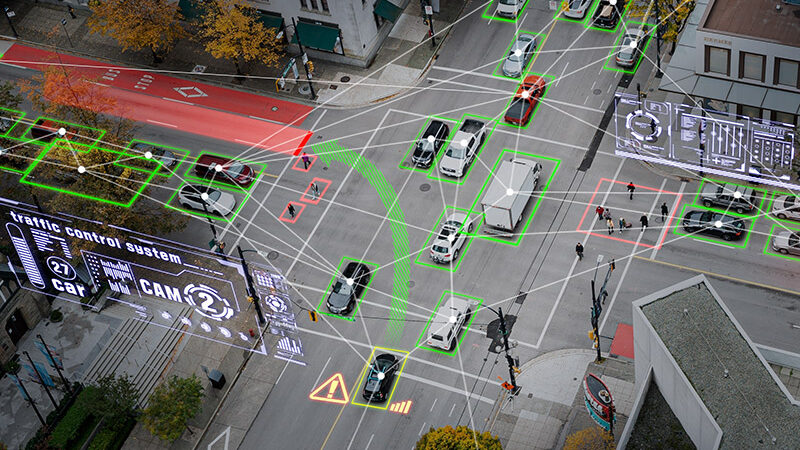IoT Modules: Which One Is Right for Your Deployment?
By The Telit Cinterion Team
July 31, 2025
By The Telit Cinterion Team
July 31, 2025
Estimated reading time: 6 minutes

The Internet of Things (IoT) has revolutionized how we interact with technology. IoT links our cell phones to:

By 2030, the number of IoT devices worldwide is expected to reach 32.1 billion and continue to climb. IoT offers limitless remote opportunities to manage the minutiae of everyday life. With the internet and an app, consumers can:

Smart cities use IoT for smart grids and to provide enhanced security and surveillance. Smart cities connect:
IoT modules — small computing devices that connect objects to wireless networks — are essential components of any IoT deployment. These core enablers manage the collection, storage and transmission of data. Ensuring modules function securely and consistently is crucial for a successful IoT deployment.
As with most technological advancements, there are risks to safety and security that must be addressed.
To ensure you select the best module and supplier for your next project, it is essential to understand:

Is your business ready to scale its operations and infrastructure to support additional users? If you want to increase your connected devices and services, consider:
Numerous providers manufacture chipsets with similar specifications. To identify the top IoT module, look beyond basic data sheets that list module specs side by side.
Focus on risks related to the module and the manufacturer:
The module must be adaptable and capable of switching connectivity as needed, especially for large projects that require future-proofing and upgrades. Likewise, the module vendor’s expertise should include connectivity and life cycle management.

Suppliers that do not guarantee users’ intellectual property (IP) rights leave them vulnerable to claims of IP infringement. Providers who do not implement a multi-layered security approach jeopardize the security of their systems.
In the United States, the Department of Defense (DOD) and other federal agencies have banned certain foreign technology providers due to national security concerns. When selecting an IoT module vendor, choose one with:
The vendor should provide clear visibility into where components are sourced and assembled and offer dependable connectivity options. This helps ensure your deployment remains compliant and secure, even amid shifting geopolitical landscapes.
It’s crucial to work with industry leaders who can develop modules from the ground up, customized to fit your needs. Look for vendors with a well-established and evolving product library, as well as expert-backed service and support.
Their modules must deliver end-to-end security, covering everything from the device and module to the application and connectivity. Your provider should oversee security throughout the entire life cycle of the module.

The cellular landscape is evolving rapidly. Your IoT partner must be equipped to adapt to technological shifts in real time. With 5G widely deployed across North America and expanding globally, broadband cellular has reached new heights in:
5G New Radio (NR) reduced capability (RedCap) has become the go-to solution for mid-speed, cost-sensitive use cases, like:
5G NR RedCap — with enhanced energy efficiency and integration into 5G networks — provides a future-proof alternative to legacy LTE-M and narrowband IoT (NB-IoT).
While North American carriers have largely phased out 2G and 3G networks in favor of 5G, parts of Europe and Asia still rely on older LTE systems. Some regions continue to support limited 2G and 3G connections. This disparity makes it essential to choose a provider that offers global connectivity plans.
Modules that easily integrate with existing systems allow for wireless, future-proof upgrades. IoT module providers with global experience have an advantage over regional competitors.
Consistent connectivity is essential to your project’s success. However, maintaining always-on network access can be difficult without flexibility in operations. Choosing a module partner with versatile connectivity options keeps devices connected during outages or provider loss. Operational flexibility supports your use case, enabling expansion and scaling.

Choosing the right IoT module provider is essential for the long-term success of your deployment. Beyond hardware, your provider should offer a combination of:
Seek a partner who can ensure supply continuity and meet global certifications while providing robust security throughout the module’s life cycle.
Telit Cinterion has dedicated over 30 years to cellular module technology. Our extensive selection of affordable cellular modules suits a wide range of global solutions. We minimize risk through enhanced business practices and manufacturing processes. Our modules effortlessly integrate with older designs.
Our products and services include connectivity and life cycle management. We give you the flexibility to grow your fleet through bundles that enable your modules to switch between MNOs. We act as a development partner with extensive technical expertise, providing custom solutions throughout your deployment.
As leaders and early adopters of 5G and 5G NR RedCap, business leaders trust Telit Cinterion’s IoT-enabled solutions to expand the speed and security of their networks. Contact us to discover which module is best suited to meet your needs in the 5G era.
Editor’s note: This blog was originally published on 28 June 2018 and has since been updated.